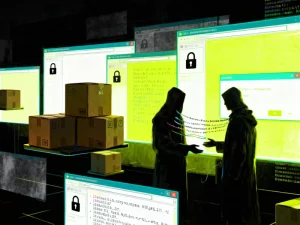The year 2025 is shaping up to be one of the most perilous periods in modern cybersecurity history. The global threat landscape has intensified, with attackers growing more sophisticated, stealthy, and persistent. According to the 2025 CrowdStrike Global Threat Report*, the number of interactive intrusions has increased by a staggering 75% year-over-year. Perhaps even more concerning, the average breakout time, how quickly adversaries move laterally within a victim’s network, has dropped to just 62 minutes. This means defenders have less than an hour to detect and respond before attackers start digging deeper. As threat actors evolve their techniques and broaden their targets, no sector or region is immune. In this volatile environment, businesses must move beyond reactive cybersecurity and embrace a proactive, intelligence-driven approach.
- Attackers Are Faster, Smarter, and More Coordinated
Traditional cyber threats like phishing and malware are still prevalent, but today’s adversaries are increasingly bypassing these with more cunning methods. The CrowdStrike report shows a sharp shift toward identity-based attacks, where attackers leverage stolen credentials and legitimate tools rather than malicious code. This technique, often known as “living off the land,” makes detection incredibly difficult for conventional security systems. Moreover, the emergence of AI-powered attack tools allows cybercriminals to craft hyper-targeted social engineering campaigns and automate reconnaissance tasks. With nation-state groups and ransomware gangs sharing tactics and infrastructure, attackers are now operating more like well-funded corporations than isolated hackers.
- Ransomware Has Become a Business Model
Ransomware continues to be one of the most damaging threats in 2025, but it has transformed into something far more sinister. Rather than just encrypting files, attackers now employ double and triple extortion techniques: stealing sensitive data, threatening public leaks, and targeting customers or partners if payments are not made. According to IBM’s X-Force Threat Intelligence Index*, ransomware attacks made up nearly 25% of all incidents in early 2025, with the average ransom demand exceeding $2.5 million. Worse, even after payment, many victims find themselves attacked again, often by the same threat actors or their affiliates. This highlights the importance of strong prevention and rapid incident response, not just backups or insurance policies.
- Critical Infrastructure and Public Services Are Now Prime Targets
While businesses across all industries are at risk, critical infrastructure, government entities, and public utilities are increasingly under attack. CrowdStrike’s report highlights a notable increase in activity from nation-state groups targeting telecommunications, healthcare, and defense sectors. These are not just theoretical risks; the attack surface for essential services has expanded due to digital transformation and increased remote access. The consequences of a breach in these sectors go beyond financial losses; they pose risks to national security, human safety, and public trust. As geopolitical tensions escalate, these targets will remain at the top of the adversarial agenda in 2025 and beyond.
- Small and Medium Enterprises (SMEs) Are No Longer “Too Small to Hack”
Many SMEs still believe they’re under the radar of sophisticated threat actors, but the data tells a different story. Opportunistic cybercriminals now use automation to scan for vulnerabilities across millions of IPs, meaning any exposed system becomes a target regardless of company size. Worse, SMEs often lack the resources to detect or recover from advanced threats. A single breach can result in irreparable damage, such as loss of customer trust, legal penalties, or permanent closure. In 2025, cybercriminals are playing a volume game: while large enterprises may be their main prize, small businesses provide fast, low-hanging fruit.
- The Urgent Need for Proactive and Intelligent Defense
The current cyber threat level demands more than just tools, it requires strategy. Organizations need to adopt a proactive, threat-informed defense model that combines real-time monitoring, employee awareness, and AI-powered analytics. Embracing Zero Trust architecture, enforcing multi-factor authentication, and investing in endpoint detection and response (EDR) tools are essential. Just as important is building a culture of cybersecurity where decision-makers, not just IT departments, prioritize resilience. The difference between surviving a breach and becoming tomorrow’s headline often comes down to preparation and response time.
Final Thoughts
The cyber threat level in 2025 is not just elevated; it is alarming. With attackers moving faster, using smarter tools, and targeting a wider range of victims, every organization must assume they’re already in the crosshairs. Waiting until an incident occurs is no longer an option. Business leaders must act now, guided by the latest intelligence and equipped with modern defenses that evolve alongside the threat landscape. If your organization is ready to strengthen its cyber posture and implement smarter threat mitigation, Terrabyte is here to help. From security architecture to threat intelligence, our expertise equips you for the realities of 2025 and beyond.
*References:
*CrowdStrike 2025 Global Threat Report: https://www.crowdstrike.com/global-threat-report/
*IBM X-Force Threat Intelligence Index 2025: https://www.ibm.com/reports/threat-intelligence




